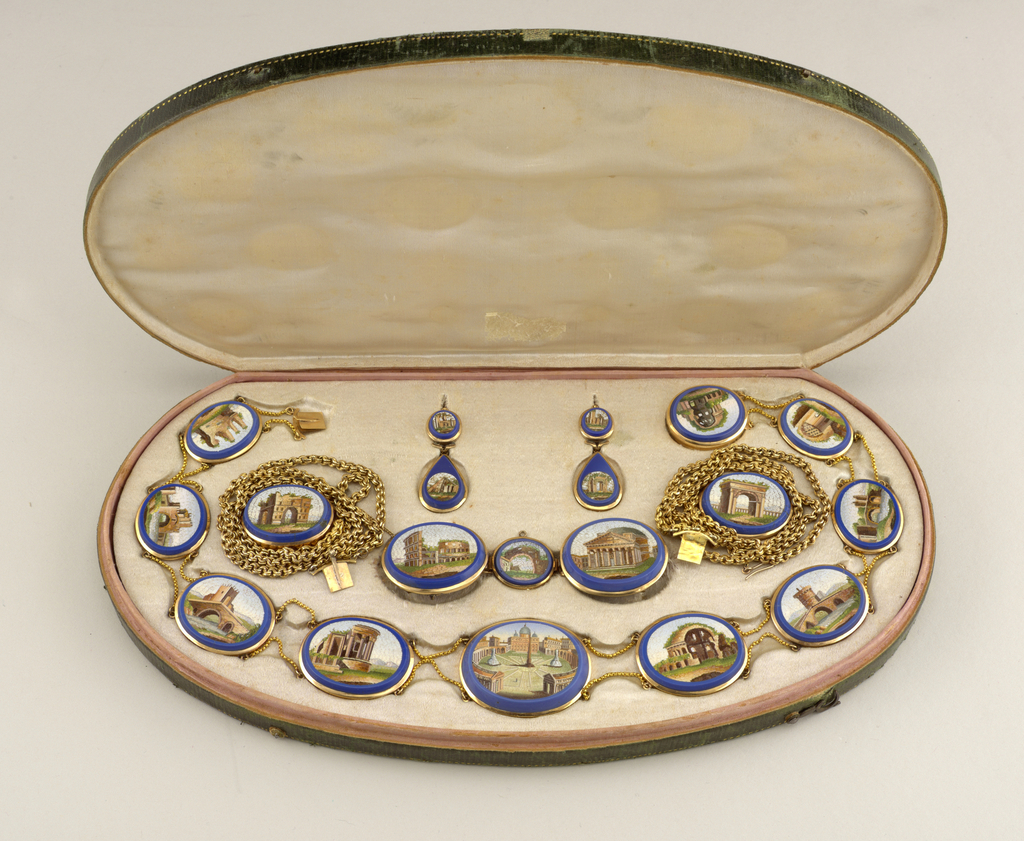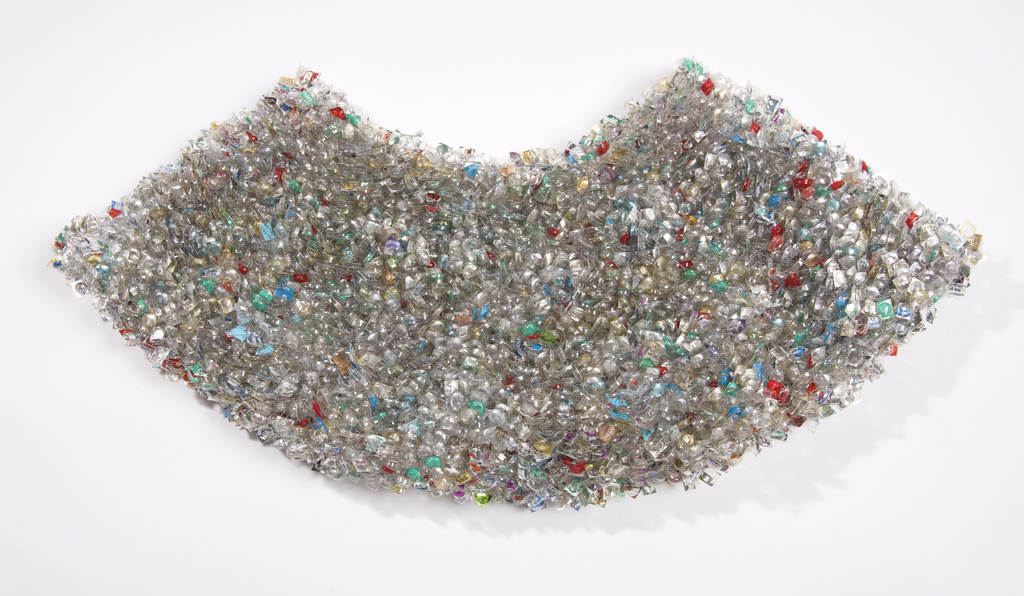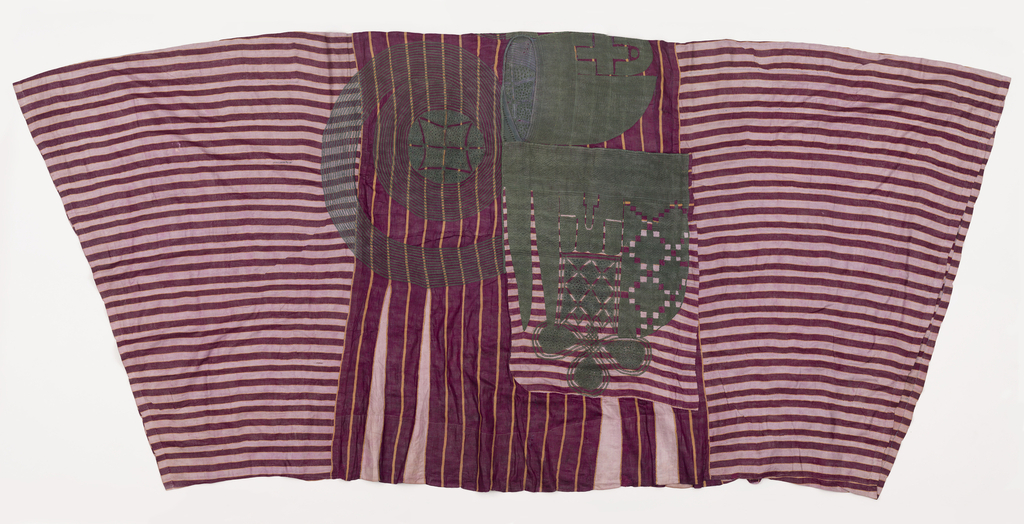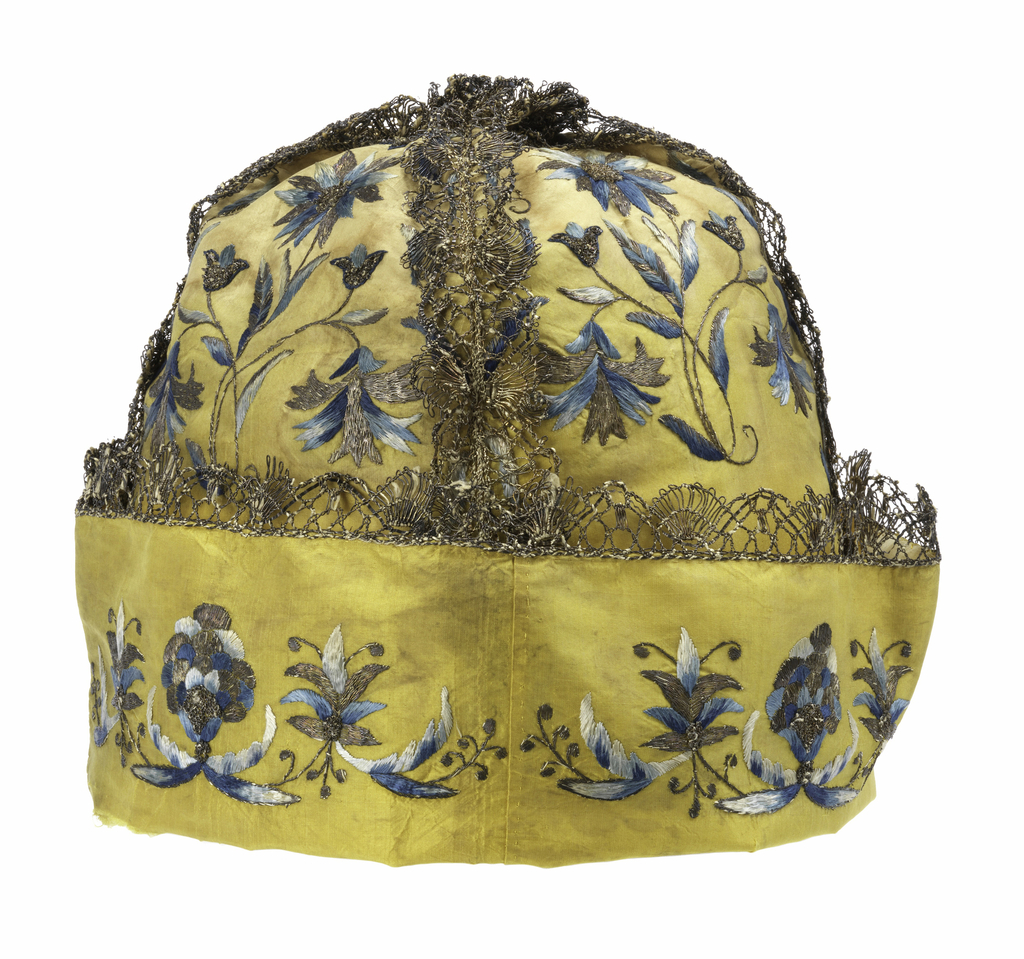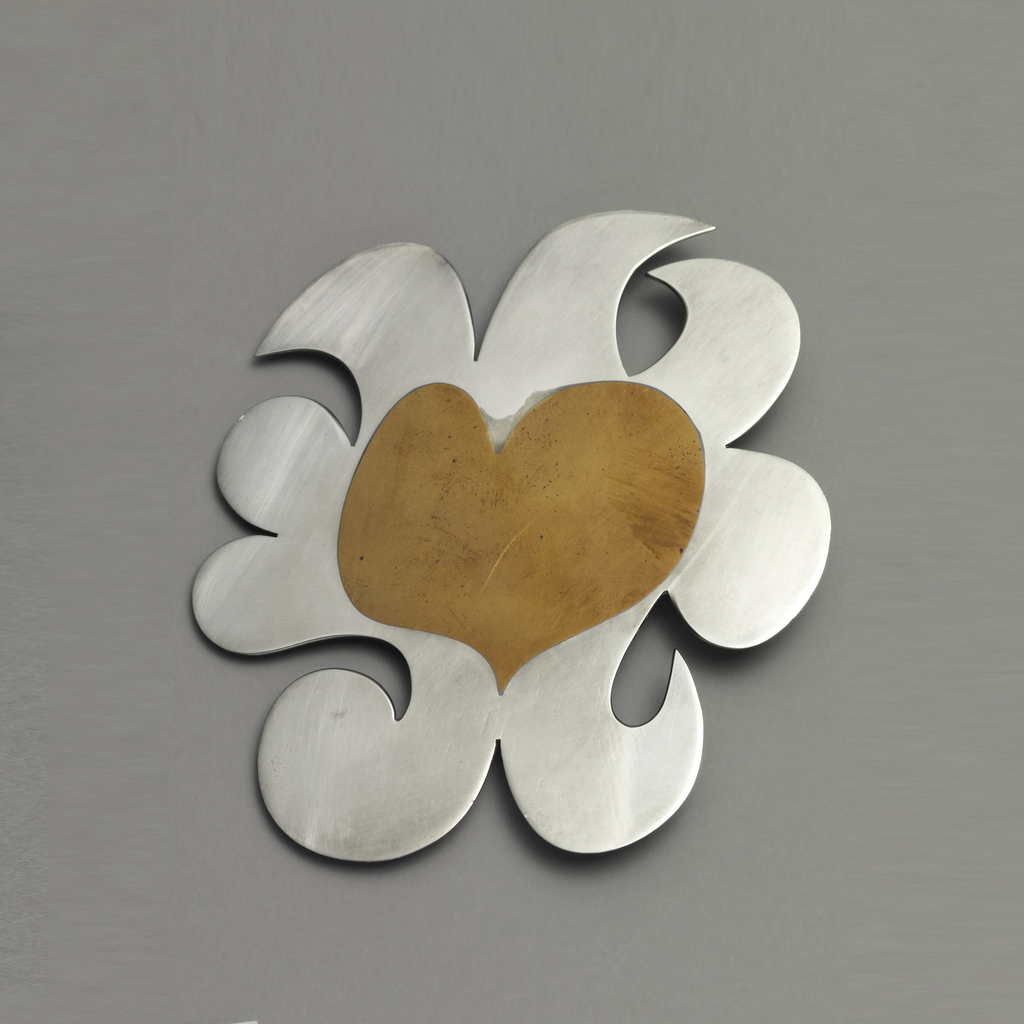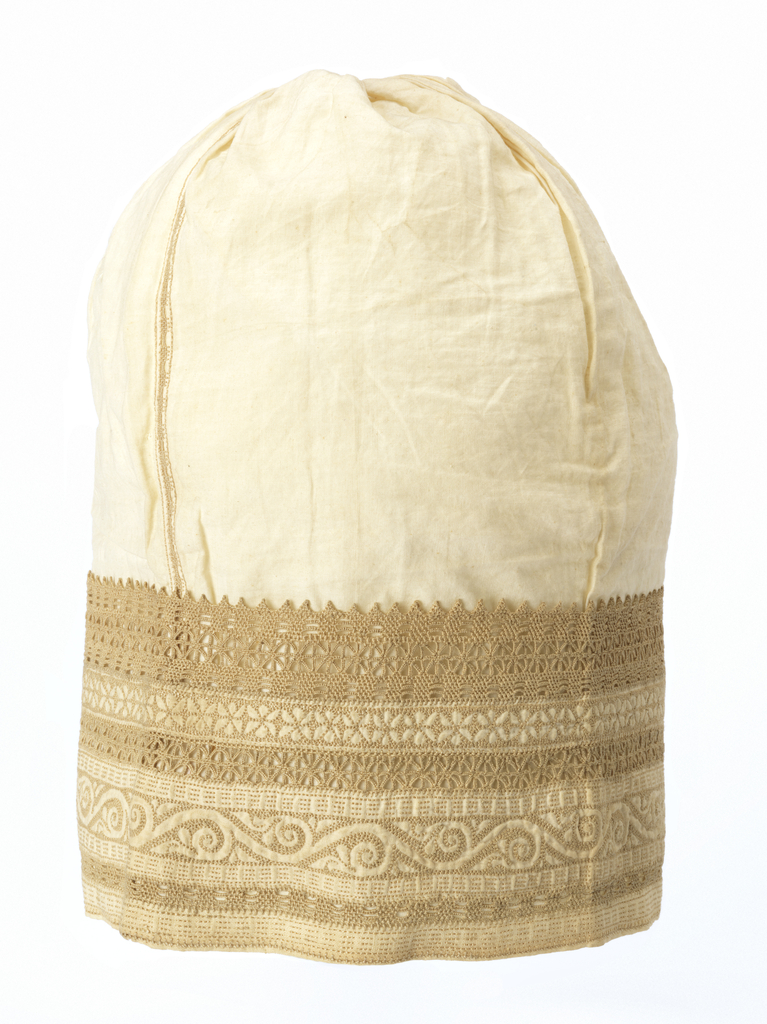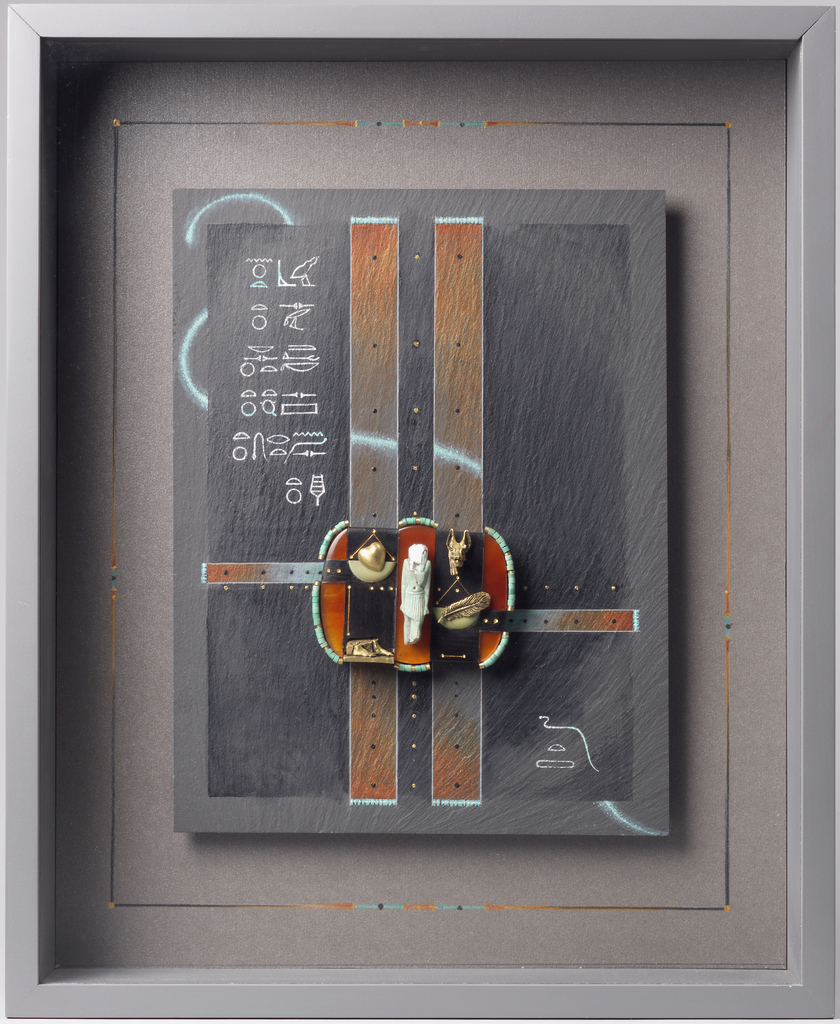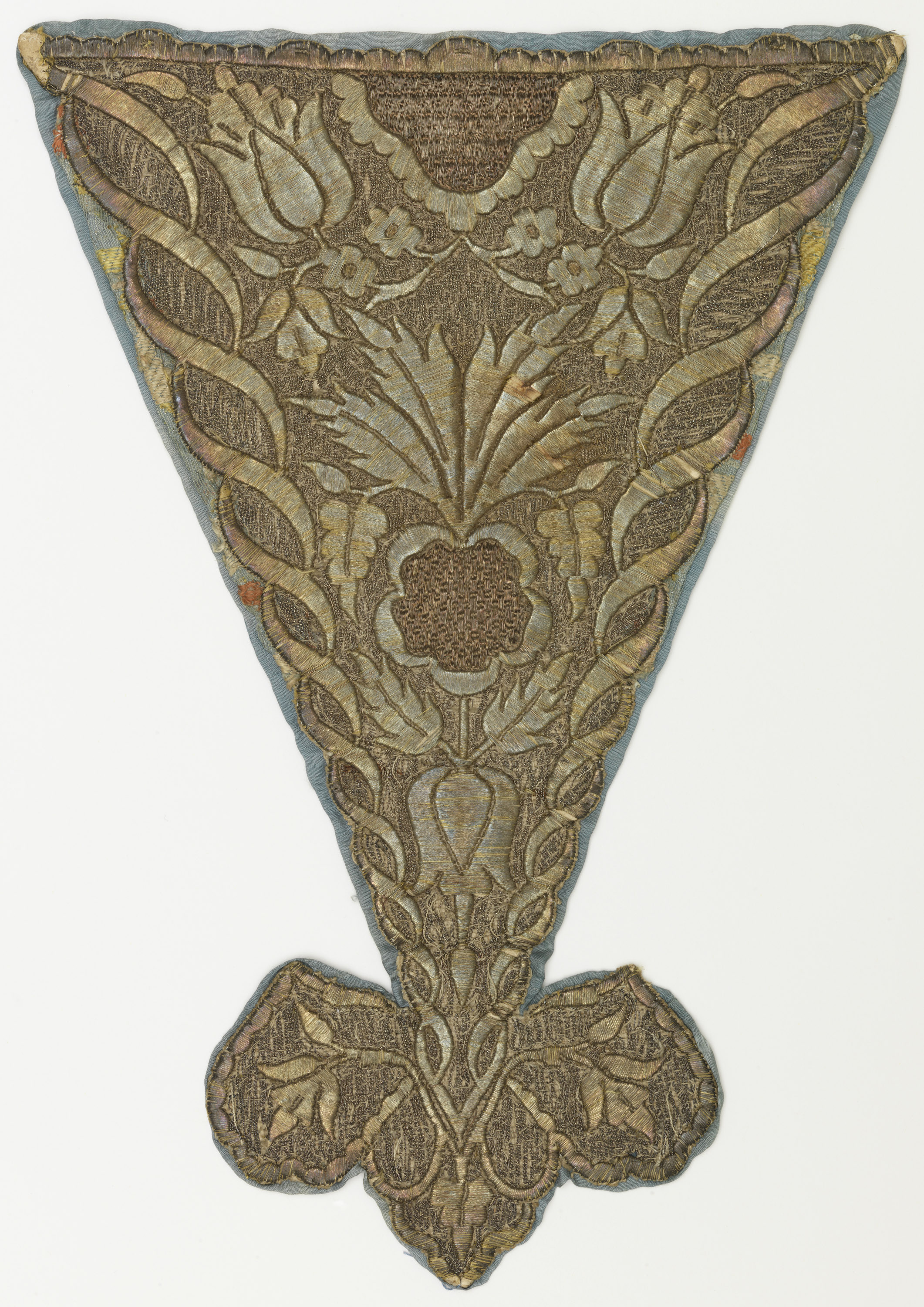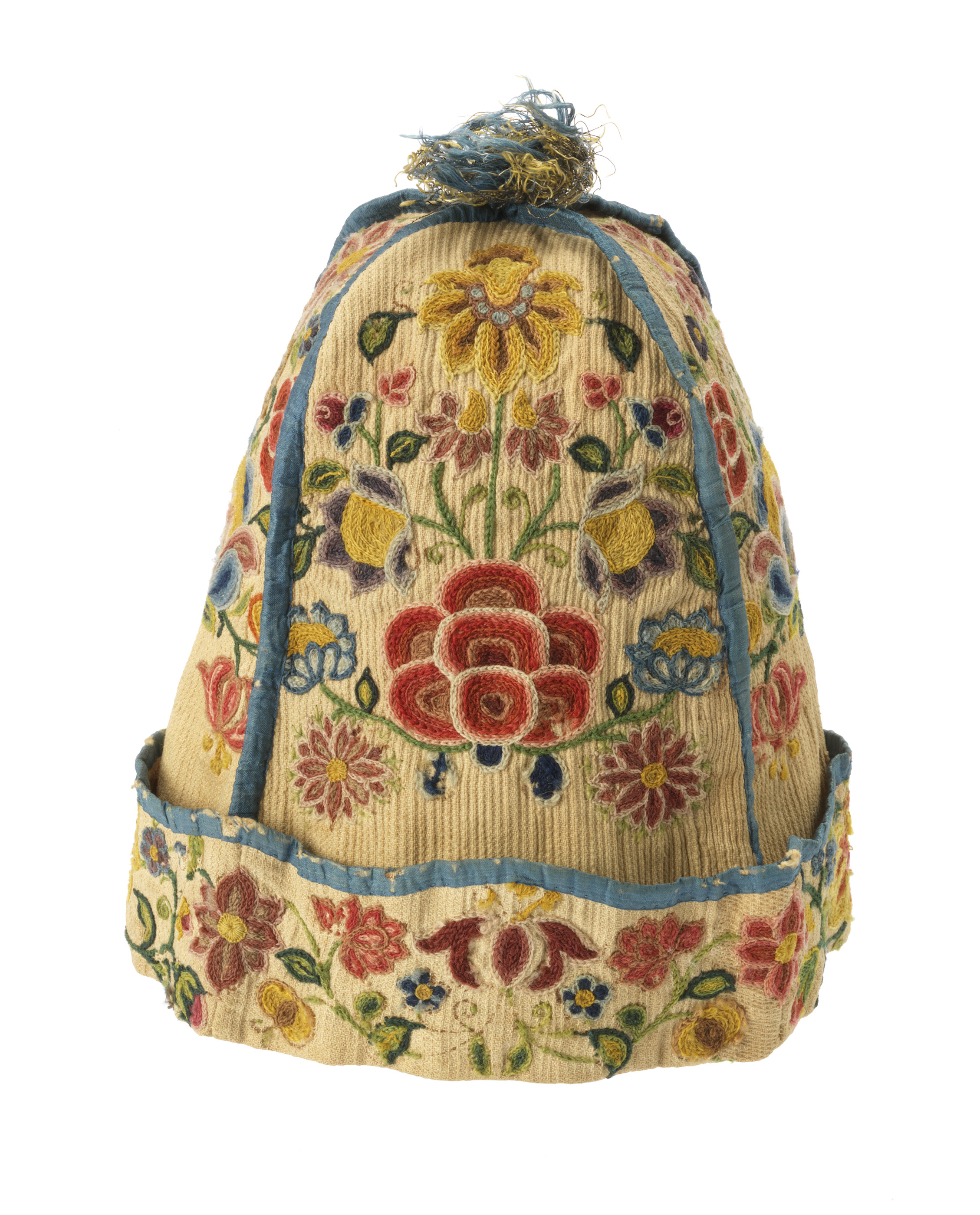This jewelry parure, or suite, is indicative of a custom that was unique to its time and class. The Grand Tour was a traditional trip taken by upper class young men and women, with the goal of exposing them to the artistic riches of France and Italy, thereby completing their education. These long sojourns became...
At first glance, this necklace catches the light and each individual bead shimmers like a mirror. Upon closer inspection, however, it is discovered that instead of beads, it is made up of small square pieces of medical pill blister packages, each loosely woven on thin, metal wire. This necklace was designed by Verena Sieber-Fuchs, a...
Prestige robes with flowing, wide sleeves and elaborate embroidery were worn by aristocratic Fulani, Hausa, and Nupe men. Their use is primarily associated with the 19th-century Sokoto Caliphate, centered in northern Nigeria, and their distribution is to key Islamic trade routes throughout the region. Their lavish use of costly hand-woven silk proclaimed the wearer’s wealth...
This nightcap consists of four embroidered sections of cloth joined and bordered with braided lace made of silver-wrapped thread. The lower edge, embroidered on the opposite side, is folded up to form a brim. The style of the embroidery, which also uses silver-wrapped thread, is called chinoiserie (Chinese-esque), and includes imaginary, exotic-looking flowers that represent...
This brooch, designed by artist Carol Summers, is a three-dimensional representation of the big, bold wood-cut prints for which he was famous. Summers, who passed away on October 27th, 2016, trained at Bard College and the Art Students League in New York City, where he studied painting and printmaking. This brooch is unique in that...
The decoration on this cap, found only on the lower edge and the single seam, accents its simple design. Wigs were commonly worn in public in the seventeenth century, and many men had shaved heads. When the wig was removed, nightcaps were worn to protect the head from drafty interiors, even during the day. They...
Ever wonder what your jewelry does when you aren’t wearing it? This brooch by the British art jeweler and goldsmith Kevin Coates demonstrates Coates grappling with this question. When Coates creates a piece of jewelry he often also designs an elaborate and beautiful housing for it to live in when not being worn, allowing the...
The stomacher was a necessary element of a woman’s daily wardrobe in the eighteenth century. Often elaborately decorated with embroidery, ribbon bows, and metal threads, the triangular shaped accessory covered the open front of the robe à la française. As the fundamental style of dress during this period, these gowns were characterized by their front...
This 18th-century hat, called a nightcap, is decorated with crewel, a wool yarn often used to embroider linen. Known as crewelwork, this technique was frequently applied to nightcaps, where it was worked into bouquets of exotic and imaginary flowers and winding stems. Similar motifs also appeared on colorfully dyed chintz, an Indian cotton textile that...
